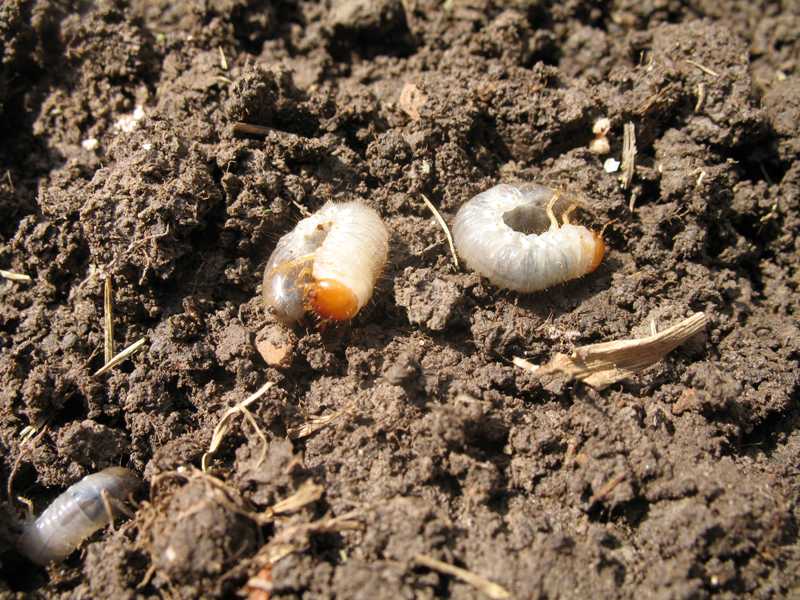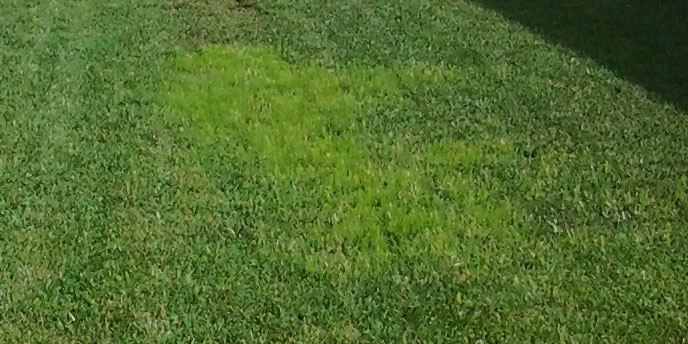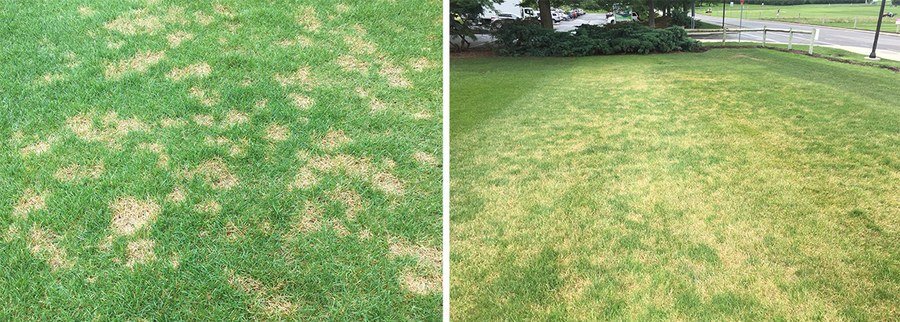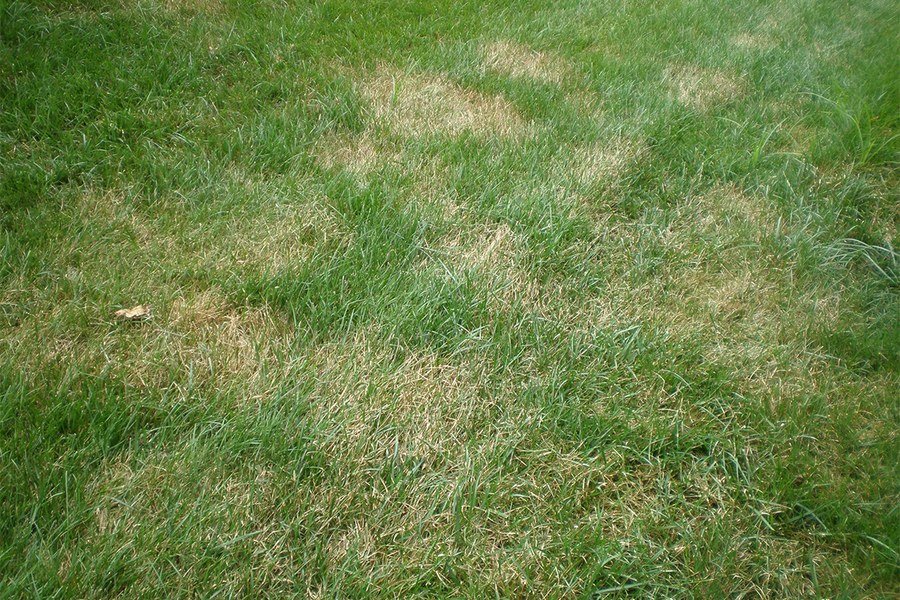Lawn Care
It rained after my application – will it wash off?
Our products are water soluble, dry within 20-25 minutes, and are effective once they dry on the plants. Please allow 10-14 days for results.
Will the application hurt my children/pets?
Our products are registered by the E.P.A. and are safe to both people and pets.
How long should I stay off the lawn?
Re-entry is safe once products have dried. Usually 20-25 minutes (weather permitting).
How long before weed control takes effect?
Weed control must trans-locate through the plant; this process usually takes 10-14 days.
What is the length of time between the applications?
Depending on your chosen lawn care program, our applications are normally done 6-8 weeks apart.
How long should it take Spectrum’s Licensed Techs to complete my application?
Our rule of thumb is 1 minute per every 1000 square feet. Times will vary depending on the size of the lawn.
What type of fertilizing equipment do you use?
We use a variety of broadcast spreaders and low-volume sprayers.
Why do you fertilize zoysia later than other grass?
Zoysia is fertilized in late spring and summer, during its growing season.
When can I water the lawn?
Lawns may be watered any time after products have dried. It is best practice to water 24 hours after application, if possible.
Tell me about crabgrass?
-Crabgrass’ primary germination is in early to mid-Spring.
-We recommend an early start with Spectrum’s applications to help control the germination
-Most crabgrass issues are created by very hot conditions and mowing grass too short.
When is the best time to water?
The best time to water is early morning, specifically pre-dawn. There is less evaporation and it allows the lawn to dry out naturally through the course of the day. Avoid watering in the evening or at night, as this practice encourages disease.
Why does my lawn have brown spots?
There are many variables, but most brown spots issues are drought related. If the lawn has been kept properly watered, disease or insects may be the culprit. It is best to have us take a look!
Why does the lawn have wild violets?
Wild violets are a persistent, perennial weed and one of the most difficult to control. They spread by both seeds and creeping rhizomes. Frequently, two or more applications are needed, with fall applications generally being more effective.
Why do I have mushrooms in my beds/lawn?
Mushrooms are the result of decaying organic matter (usually wood) buried under the surface of the turf. It could be building material or a dead tree root. Mushrooms must be physically removed.
What can I do about pet urine damage?
Pet urine damages turf due to a very high concentration of salts in a small area. Irrigating will help, yet results can be limited.
Specialty Applications
Grubs

Grubs damage the lawn by feeding on the roots of the turf. Bluegrass is most susceptible, yet grubs can be found in any healthy lawn. The recommendation is a preventive treatment, yet we can do a post infection treatment and make a plan for repair if needed. Our grub control treatment is NOT mole control.
Signs to look for Grub damage:
- Turf feels spongy as you walk across it
- Dead turf that can easily be rolled up
- Irregular brown patches throughout lawn
What is nutsedge (water grass) and how is it treated?

Nutsedge is a common summer perennial weed in our area that reproduces from underground rhizomes that form tubers or “nuts” that form new plants. It is found often in low, wet areas in turf, yet it can also occur in drier turf. There is no preventive treatment for nutsedge, we can treat the sedge up to three times per growing season. Multiple applications may be required and may have to be treated each year.
Characteristics:
- brighter, lighter green, quickly growing than normal turf
- triangular stem
The weather in Missouri brings disease problems for lawns. The most favorable conditions are humid days and warm evenings, occurring anytime between late April and October. Disease control/fungicide treatments are a surface application to control/prevent diseases on turf. Disease controls may require multiple applications. Below is a brief description of the different diseases in our area:
Dollar Spot

- Small circular patches (1-6 inches) of white/tan spots of what appear to be dead turf.
- Cobwebs may be visible in morning dew.
- Leaf lesions, light tan with reddish brown boarders.
- May occur in irrigated or non-irrigated turf
Brown Patch

- mid-summer disease that appears in circular type patches
- light brown in color, ranging from a few inches up to several feet in diameter
- Irregular light brown lesions surrounded by dark borders
Lawn Renovation
When is the best time to seed?
Late summer, early fall. With the cooler conditions and less weed competition the seedlings have a better environment to grow and develop.
What type of seed do you use?
Spectrum seeds with a hybrid fescue seed.
What is the care of new seed?
- Keep the seed moist for 14-21 days. Rains help, but our soils usually dry out within 2-3 days of a hard rain.
- Water 30-40 minutes per zone, 2-3 times per week
- Heavy leaf coverage will also hinder germination. Every effort should be made to remove leaves from newly seeded lawns
Are there any special instructions when mowing my lawn after seeding?
You can mow on your normal schedule. Do not bag the grass until the seedlings start to germinate, usually within 10-14 days.
Landscape Maintenance & Landscaping
Do you remove trees?
Yes, depending on the height of the tree. Call for an estimate
When is the best time to prune shrubs/trees?
General rule for trimming is post-flower. June-July and October-November are the best times of the year to trim.
What is included in a Spring/Fall Clean-up?
Spectrum provides a complete removal of leaves, sticks, and twigs from decorative beds and turf areas. Spring clean-up is best done before the spring flush, as to not damage new growth of plant foliage.
When is the best time to lay sod?
Sod can be placed anytime, depending on availability
What type of sod do you install?
Most commonly we install fescue sod, yet we do install zoysia upon request.
What is the care of my new sod?
- Water daily for the first 14 days (30 mins each zone).
- During warm/dry weather, sod may need to be watered more than one time per day.
- Keep traffic level low on new sod.
- Continue watering for 3+ weeks, after that water at any signs of stress.
